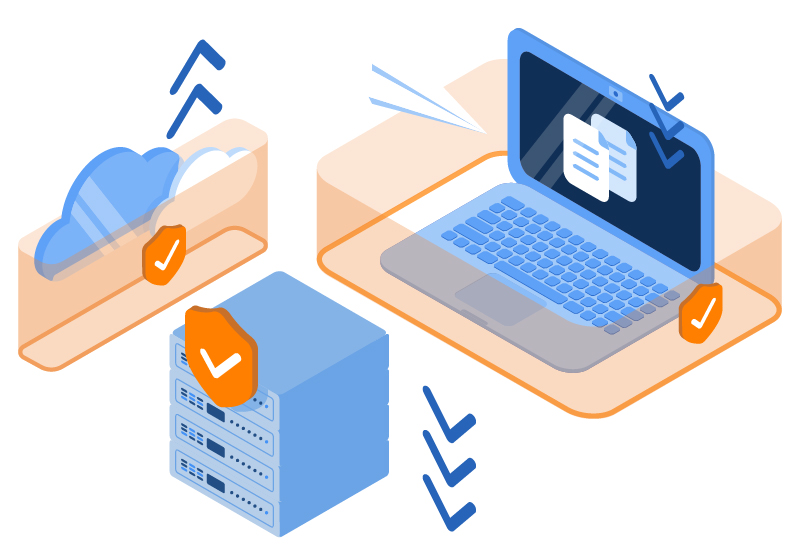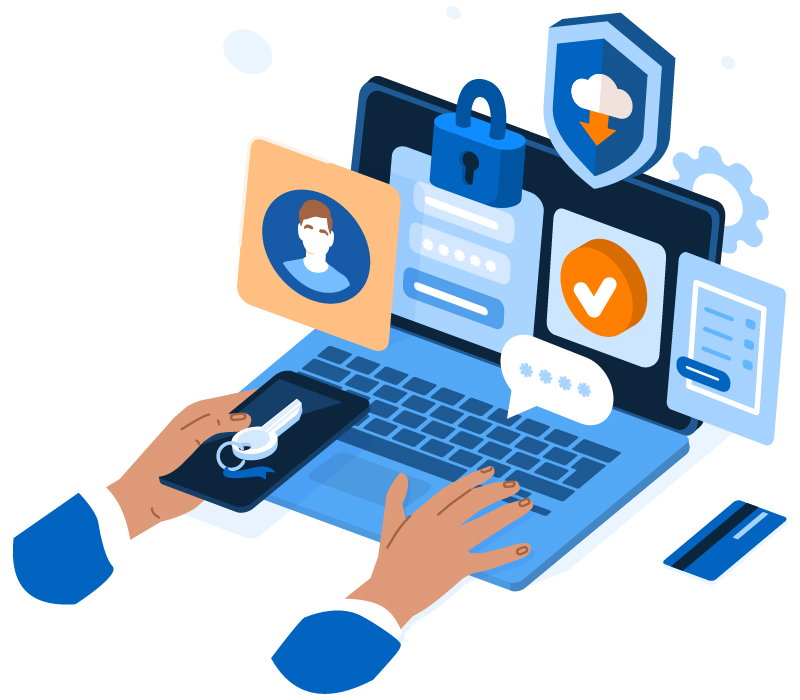As cyber threats have become more prevalent and complex, endpoint security has also been forced to evolve in order to keep up with modern risks. Once isolated cases, cybersecurity attacks now affect one in two computers, making endpoint security a critical technology addition for any organization.
Recent digital transformation initiatives across businesses and remote work environments have further contributed to an even more important role of endpoint security software. In this article, we explore the addition of continuous authentication as a complementary solution for enhanced endpoint security.
What is endpoint security?

Endpoint security is a vital part of a company’s cybersecurity strategy. It refers to protecting points at the end of a network connection—from workstations, laptops, physical servers, and virtual machines to smartphones and tablets, and Internet of things (IoT) devices.
Endpoints such as desktops and laptops are most vulnerable because of the attack vectors they support, ranging from email to web applications or unsecured networks. Endpoint security solutions protect against sophisticated cyber threats, with the most complex ones offering protection and performing adaptive security architecture tasks such as hardening, incident detection, and response. In recent years, endpoint security was enhanced and developed to evolve in a complex system known as Endpoint Protection Platform (EPP), including NGAV, EDR, and XDR.
Is endpoint security the same as Endpoint detection and response (EDR)?
Yes, endpoint security includes Endpoint Detection and Response (EDR), or endpoint detection and threat response (EDTR) which constantly monitors endpoints and performs console alerting and reporting, offering an advanced response to security incidents like malware, ransomware, or 0-day attacks.
Evolution of endpoint security
Decades ago, endpoint security equaled antivirus software (AV), which comprised a collection of “signatures” identified by security vendors. These were installed on each endpoint and were able to protect against malware. However, with the increasing number of zero-day attacks and more sophisticated cybersecurity threats such as ransomware, antivirus signatures were less and less sufficient.
The availability of computing power led to more accessible machine learning (ML) and artificial intelligence (AI) software deployed to identify malware even without AV signatures. This approach led to the creation of the next-generation antivirus (NGAV). Still, the method became less effective as hackers started to use AI to develop state-of-the-art malicious software able to evade NGAV’s technologies.
The next phase of endpoint security was marked by the development of endpoint detection and response (EDR), which deploys tools to detect malware, monitor and investigate suspicious activities within endpoints. The complexity of EDR has been gradually increasing in recent years, and complex security solutions have now been transformed into real-time monitoring platforms offering a wide variety of technologies. As a result, entire security departments now rely on EDR’s to alert, report and contain security incidents.
Key functionalities of a comprehensive endpoint security solution

Endpoint protection, including EDR’s, have evolved into a security business function with third-party integration capabilities and complementary tools covering a variety of functionalities like:
- Data loss prevention (DLP) which detects data exfiltration — whether malicious, intentional, or unintentional. DLP can be configured to prevent sensitive information from being transferred.
- Host-based firewalls monitor and control incoming and outgoing traffic, preventing the endpoint from becoming infected and stopping compromised hosts from spreading malware to other endpoints.
- Full disk encryption (FDE) provides a prevalent layer of encryption across an entire storage device, be it a hard disk or solid-state drive (SSD). The encrypted data cannot be deciphered easily without the encryption key, so data theft in the case of stolen devices is prevented.
- Client management and mobile device management (MDM) are performed to manage the latest security patches and updates. In addition, desktop computers and laptops are regularly configured to address the latest vulnerabilities, including 0-day attacks.
- Insider threat analysis examines users’ behavior and activity inside a company network. If access to sensitive data or confidential information is detected, the legitimacy of such access is assessed, and — based on job function and privileges — access is granted or restricted.
New kind of endpoint security needs in the post-pandemic reality
With millions of employees now working remotely, the rise of the modern workforce has challenged security architecture and protocols worldwide. Security teams now enhance their strategies to respond to new collaboration technologies and the massive shift to a remote workforce. The industries most affected by remote work setups are handling sensitive customer data or operating in accordance with high regulatory standards they must continue to meet.
Endpoint security platform functionalities are now complemented with several other tools and solutions to mitigate risk.

Endpoint security enhancement with typing biometrics-based continuous authentication
A valuable addition to the current security solution landscape is ActiveLock, a continuous authentication solution built on proprietary typing biometrics technology to prevent device sharing, ensuring each person in front of the computer is always the true authorized user.
After years of research and development in the typing biometrics field, the solution was publicly launched. ActiveLock is an on-device continuous authentication solution that protects against unauthorized users accessing sensitive or privileged information on company computers on Windows and macOS devices.

The continuous authentication software provides real-time protection against fraudulent device sharing. It is a privacy-focused solution that analyzes HOW users type, not WHAT they type.

